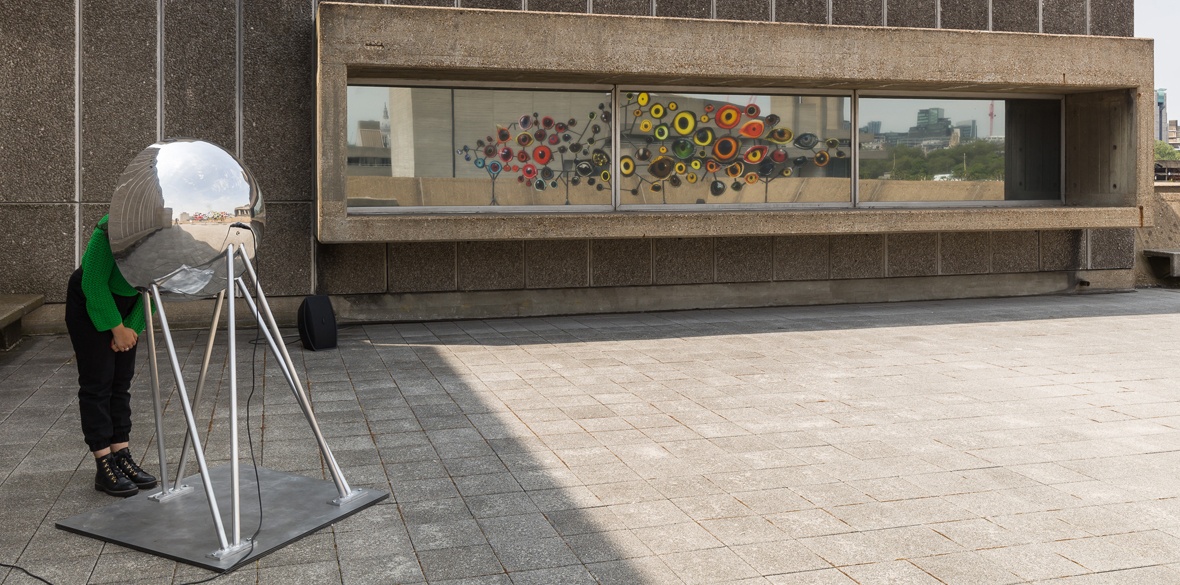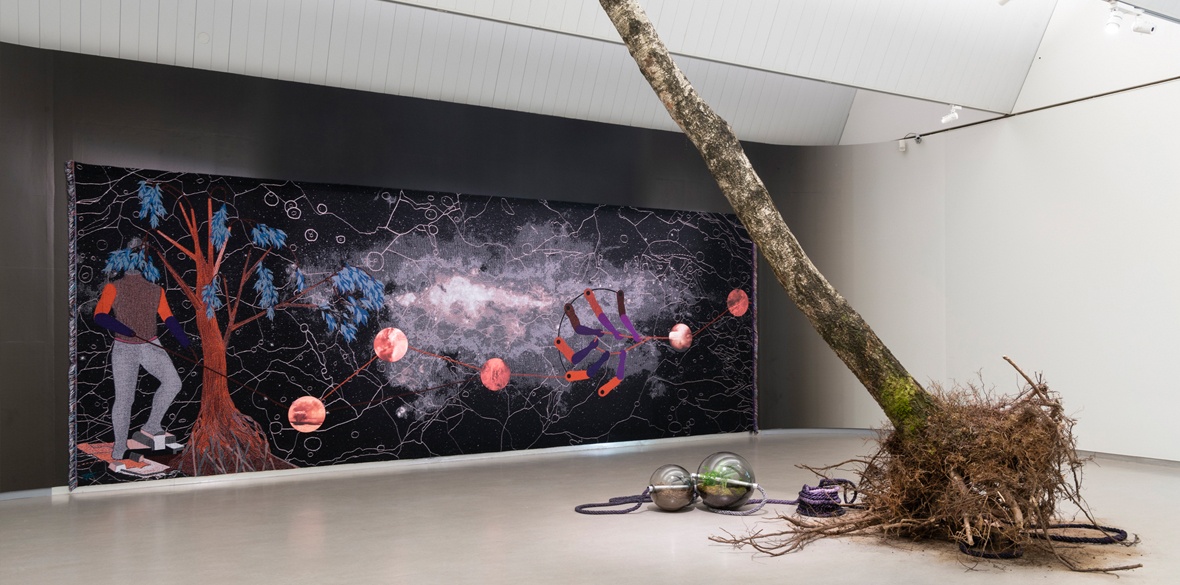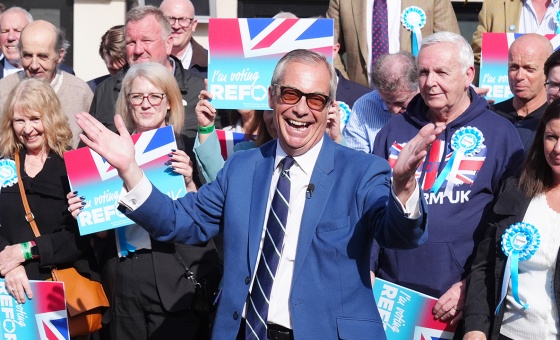This is the last article you can read this month
You can read more article this month
You can read more articles this month
Sorry your limit is up for this month
Reset on:
Please help support the Morning Star by subscribing here
Dear Earth: Art and Hope in a time of Crisis
The Hayward Gallery, London
DEAR EARTH brings together 15 artists from across the globe whose work is concerned with environmental issues. Leading on from the Hayward’s 2020 Among the Trees exhibition, it embodies the gallery’s ongoing commitment to presenting engaging and thought-provoking artworks.
First up are works by the multimedia artist Otobong Nkanga.
Born in Nigeria and now based in Antwerp, her large installation piece, In The Trifurcation, consists of a naturally fallen sweet chestnut tree whose roots are interwoven with rope that links three biospheres. Each sphere acts as a miniature ecosystem.
In the large tapestry piece Double Plot, Nkanga uses networks of lines to evoke land measurement and borders.
Also on display are her series of semi-abstract photographs, In Pursuit of Bling, that reflect on the history of Green Hill, in Tsumeb, Namibia.
Rich with minerals and ores, the hill was hand-mined by the Ovambo people for generations before industrial mining by the German colonial regime started in 1900, followed by a century of intense mining that reduced the site to a gaping hole in the ground.
Nkanga described her visit to the mine: “It was dripping with water as if the stones were crying. It was moist, as if we were moving through a vein that had been cut through.”
The highlight of the show is the work of Richard Mosse.
Born in Ireland, now based in New York, his work succeeds in communicating views of political and ecological crisis. Since 2018 he has been working in the Amazon Basin, using specialist imaging technology to capture environmental information that is invisible to the human eye.
His photographs show the effects of oil extraction by multinational companies on the Kichwa Indigenous Territory in north-eastern Peru. Oil Spill on Kichwa Territory 11 Block 192 Rio Tigre Loreto, used as the poster for the show, is both haunting and beautiful.
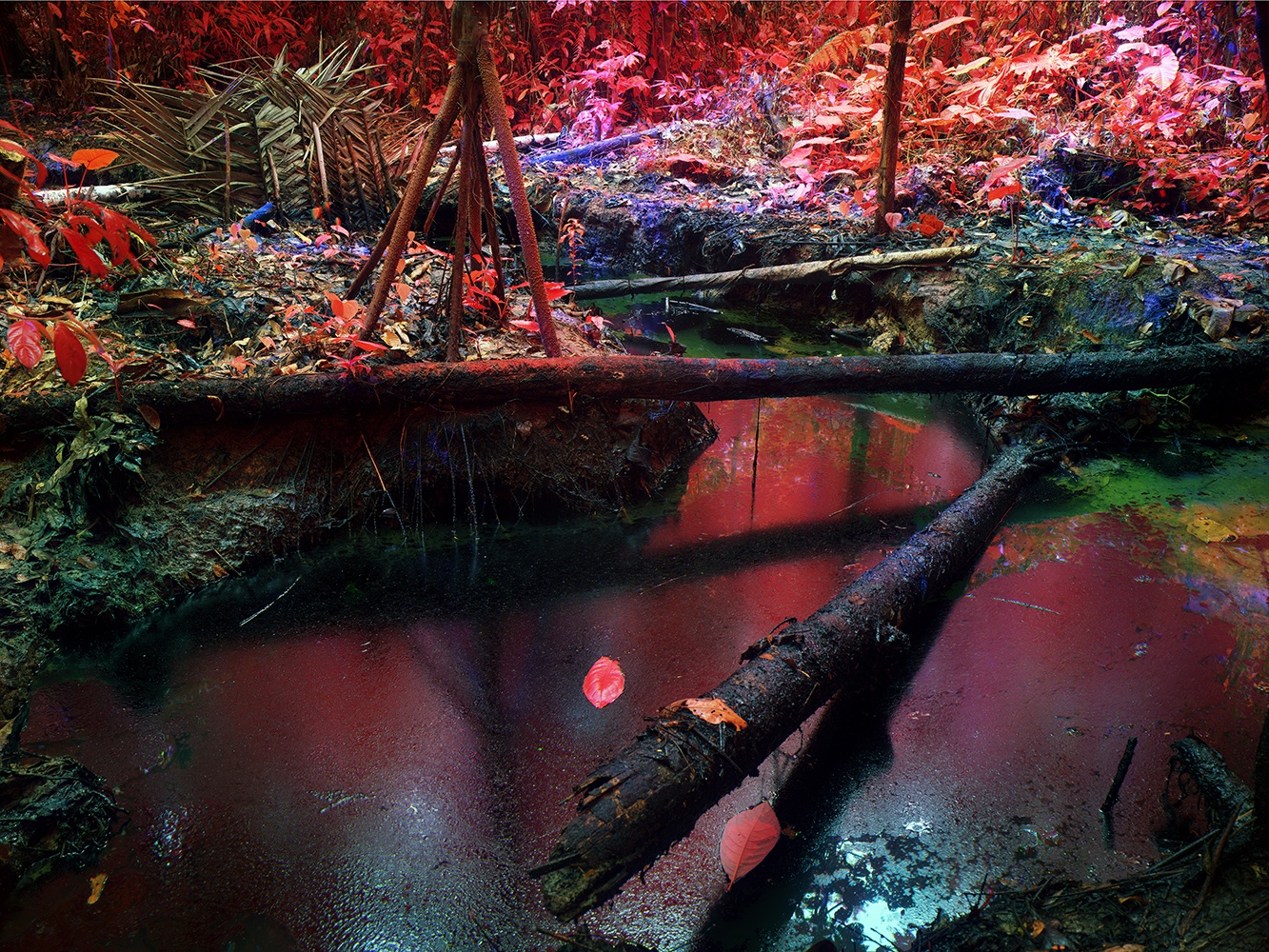
Grid (Palimi-u) features a series of powerful speeches by Yanomami people recorded on analogue 35mm infrared film, near the Brazil-Venezuela border. A deeply affecting 32-minute work, this is very much the exhibitions most powerful piece.
British duo Ackroyd & Harvey’s photographic photosynthesis works are grown from grass seed.
Their monochrome images begin life in the dark, receiving light from a projected photographic negative. Where the light falls the grass blades produce chlorophyll, the green pigment. Where there’s less light they produce less green, and where there is no light they grow but are yellow.
Their work Julian Lahai-Taylor Grow Lewisham features fescue and perennial ryegrass, clay and hessian. The portrait depicts Julian Lahai-Taylor
from the Grow Lewisham organic food collective.
Hito Steyerl is a German-born artist working in video and installation. Her work, Green Screen, features stacked bottle crates, plants, sensors, electricity data and sound. The overall aim is to draw attention to the interconnectedness of the climate crisis and the tech world’s vast carbon footprint.
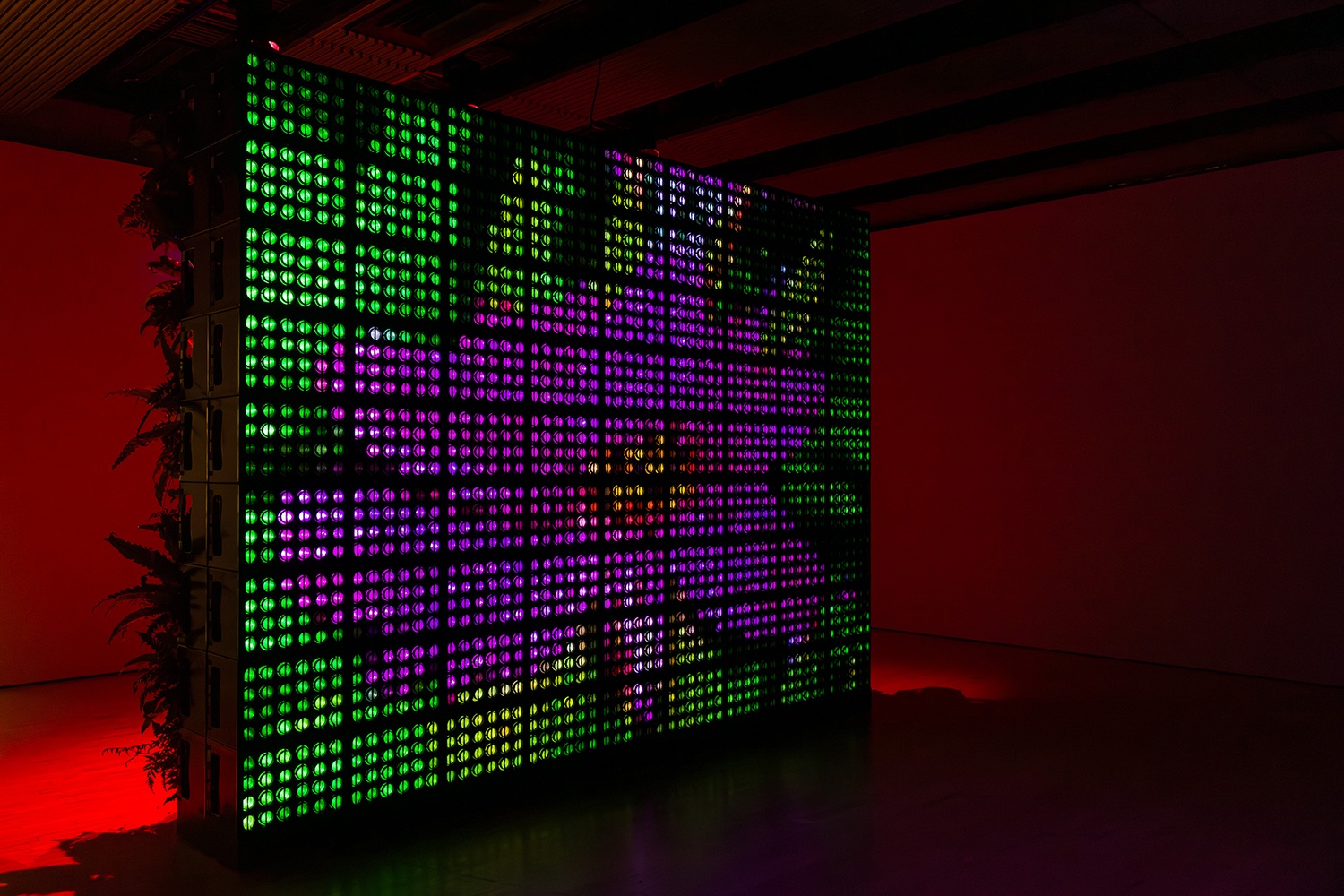
US conceptual artist Jenny Kendler’s work Bird Watching 111 invites visitors to voice a secret they have never been able to share into a microphone perched in a moss and steel enclosure. Custom software translates these words into birdsong, highlighting threatened British bird species.
Imani Jacqueline Brown, another US conceptual artist, focuses on the ecological crisis in Louisiana, where hundreds of the most polluting petrochemicals facilities in the US are located.
Not all of the work succeeds. British artist Cornelia Parker’s two-channel video The Future features a series of schoolchildren outlining their hopes for the future of the planet. It fails to engage in a meaningful way.
But overall, this is a brave and important exhibition that sets out its stall and engages on multiple levels.
Runs until September 3 2023; £16, free for members; details: southbankcentre.co.uk.
